Dinopocalypse!
An audio story translated into physical space.
View the full project at aidanhudsonlapore.com.
Radiolab is a remarkable podcast that strives to make science accessible to a broad audience. They release an episode each week that centers on a theme, such as time, space, or thought. For my two-week final project in my Rhino class, I translated their Dinopocalypse episode into a museum exhibit. In this episode, the hosts walk the audience through an alternate version of the familiar asteroid impact story. In this theory, the dinosaurs are baked to death by falling debris instead of slowly freezing from dust blocking the sun.
The show is narrative by design, and I enjoyed the challenge of transforming an auditory story into one that could be experienced in physical space. Each room corresponds to an “act” in the original episode.
I had two weeks to design, model, and render the exhibit. The focus was on the space, so areas with detailed content are marked with placeholder text.
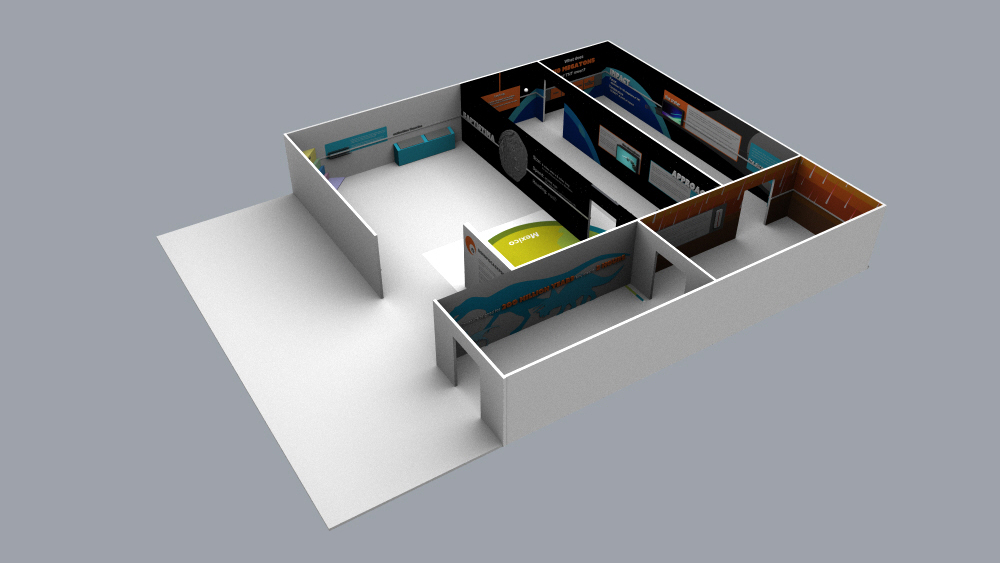

The view from outside.
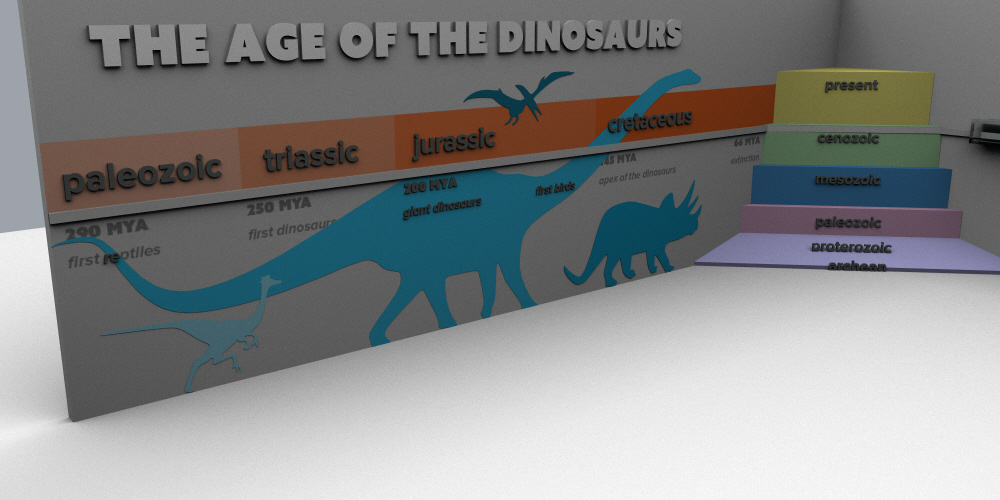
The line represents the K-T Boundary, the thin line of rock left by the asteroid impact that separates the Cretaceous period from the Paleogene period. It is only below this line that dinosaur fossils can be found. It passes through the entire exhibit, a constant reminder of the power of the asteroid that eliminated the dinosaurs.
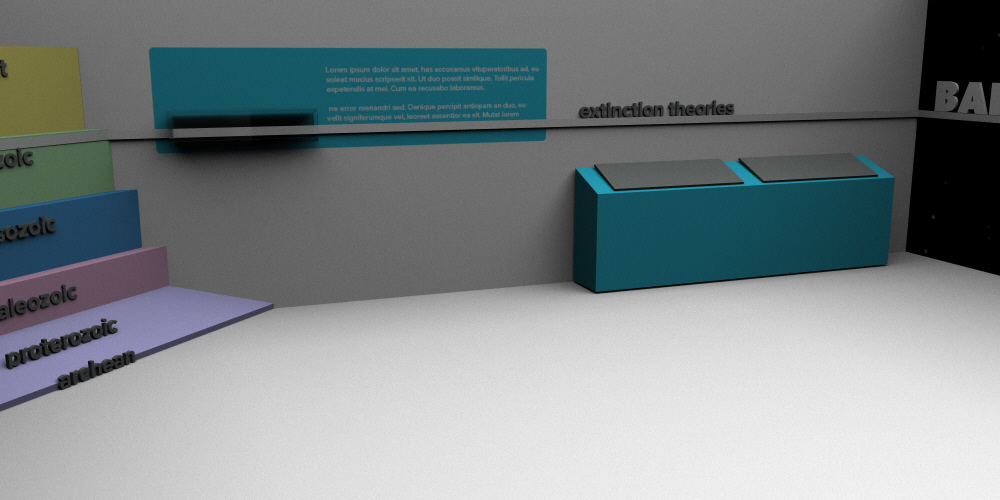
A glass box contains an actual sample of rock from the K-T boundary for visitors to inspect.
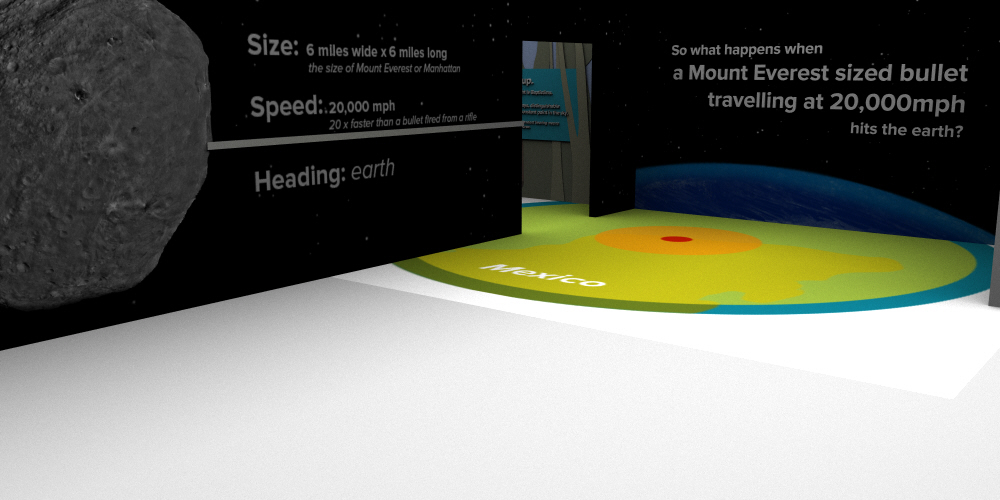
Visitors see a relief of Baptistima, the asteroid that struck the Earth and set off the extinction of the dinosaurs. The quotes on the wall are from the original Radiolab episode.
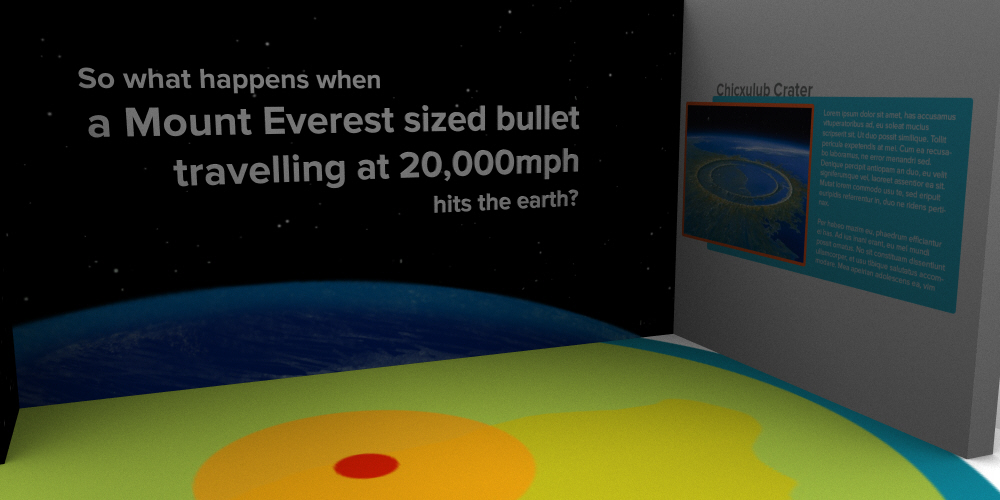
Visitors walk over a representation of the impact site and can read about its discovery.
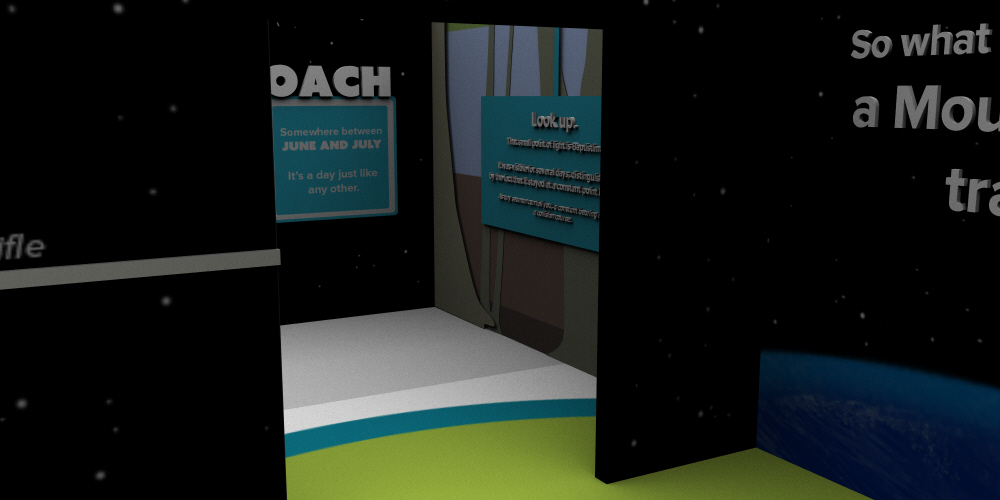

One of the most striking parts about the episode was the description of what Baptistima's approach would have looked like from the Earth. I wanted the visitors to experience this as they moved through the exhibit, so I designed the halls to give them a distinct sense of place. One wall tells them about Baptistima's course through space, and the other about what was happening on the surface.

A small light on the ceiling represents Baptistima as it would have looked from the surface several days before impact.
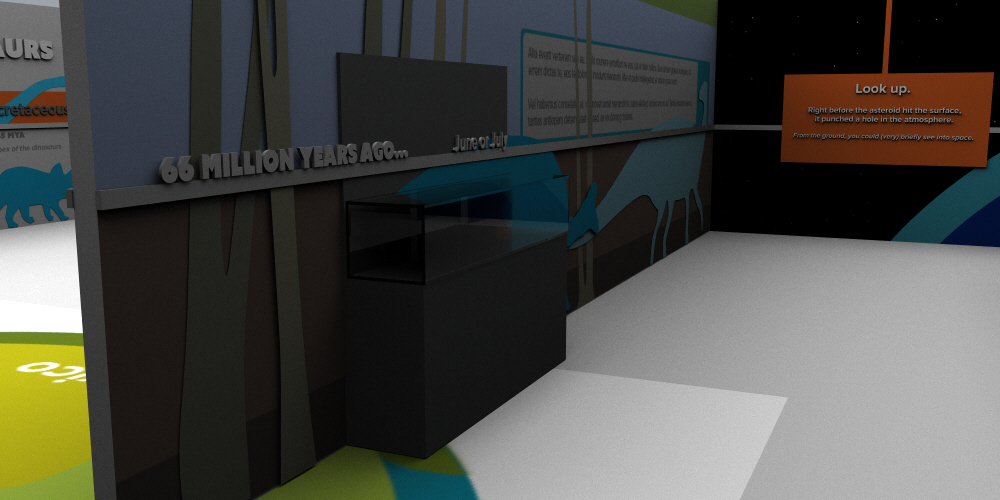

The episode described Baptistima punching through the atmosphere using the metaphor of a gun firing underwater. Like the bullet, Baptistima literally pushed the atmosphere aside. Here, a video screen shows the visitors what happens.


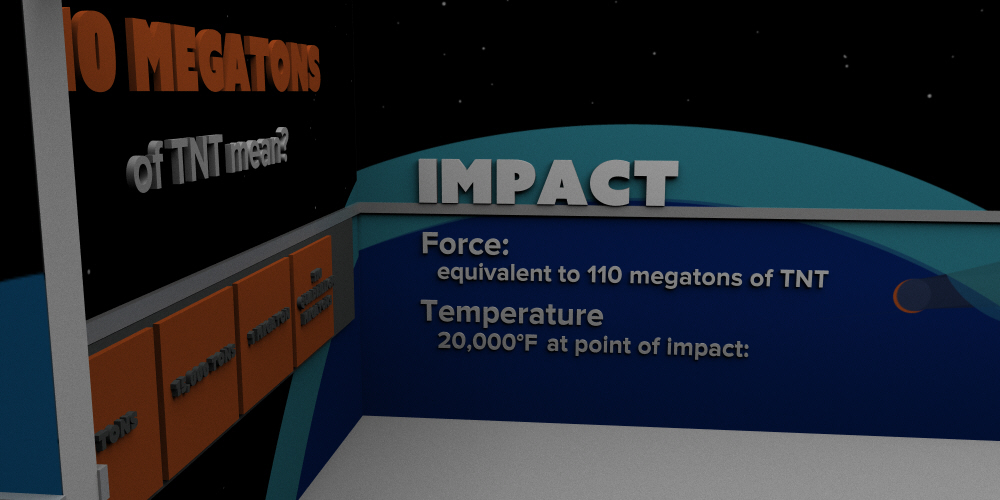

Visitors can flip up the panels to compare the power of Baptistima's impact to that of other well-known explosions, such as a hydrogen bomb. These comparisons were used in the original episode.

This screen shows a simulated impact. Explosions of this force are almost unimaginable without some help.

Baptistima hit the Earth with such force that it vaporized the rock underneath it, sending a plume of debris into space through the hole it punched in the atmosphere. This screen shows a steel ball falling into sand as an illustration of the forces at work.

The rock vapor spread out over the earth and condensed into small beads, which then fell back to Earth. These beads can still be found, and examples would be displayed in this pedestal.
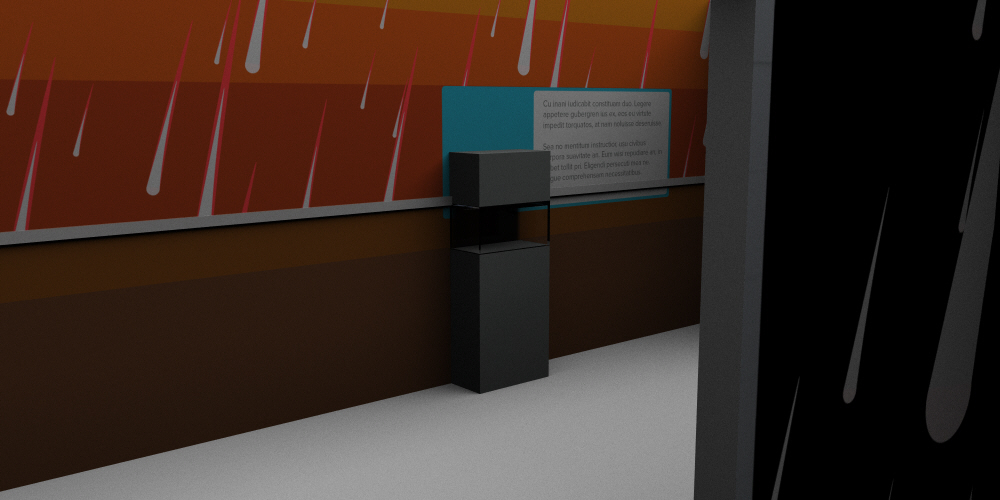
As the beads fell back to earth, the majority burnt up in the atmosphere, each one adding heat to the air. Eventually, the surface temperature became hotter than a pizza oven, killing every animal on the surface. Those below the surface were safe, because dirt is a fantastic insulator. At this pedestal, visitors can experience this insulation by sticking their hands into a space protected from a heat lamp by a thin layer of dirt.
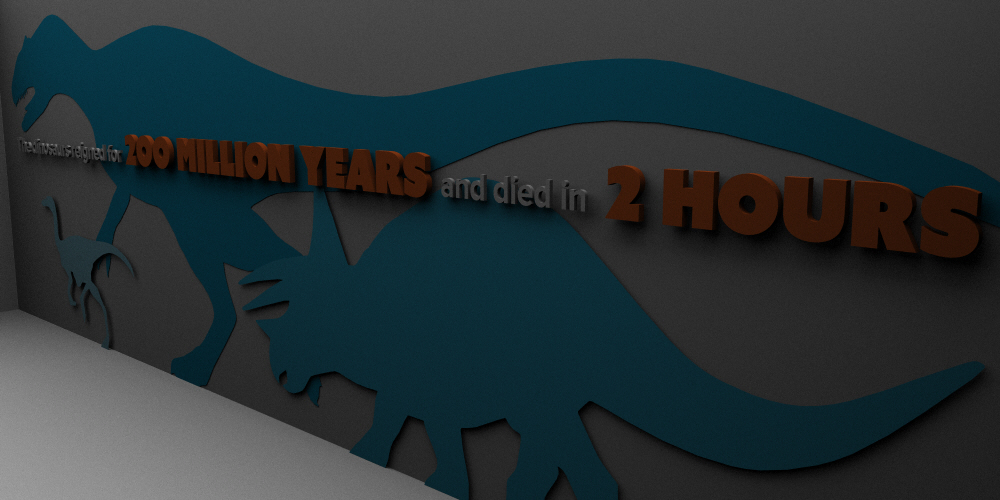
A quote from the show decorates the final room:
"The dinosaurs reigned for 200 million years and died in 2 hours."
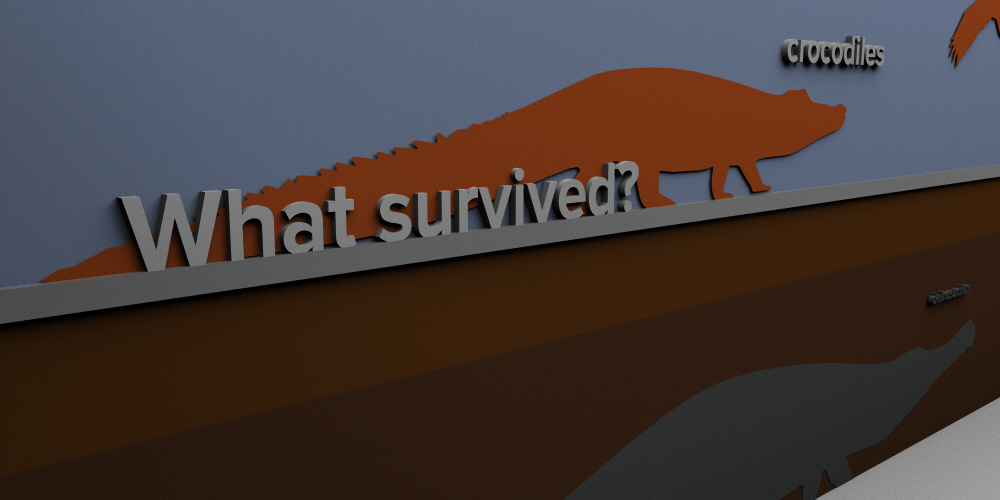
The opposite wall shows which animals were able to survive, and what their descendants look like today.

Watch the episode that inspired this project!
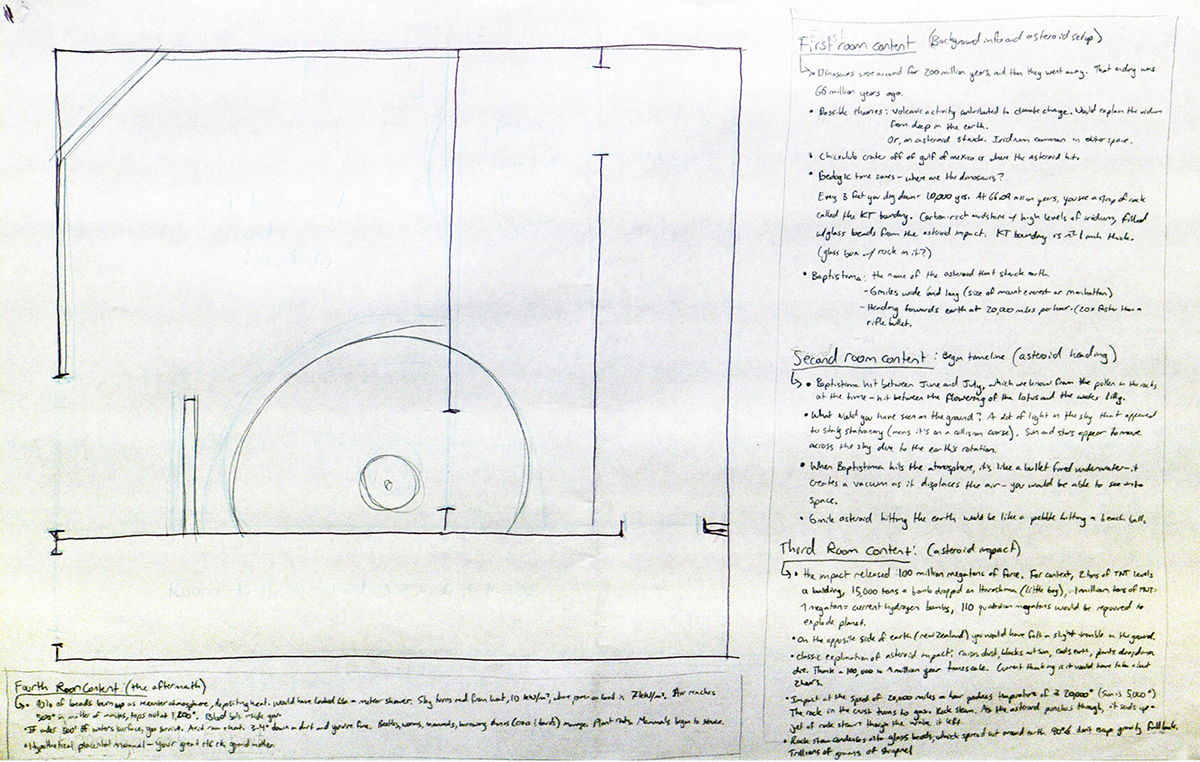
A preliminary floor plan with important notes from the episode, separated by room.
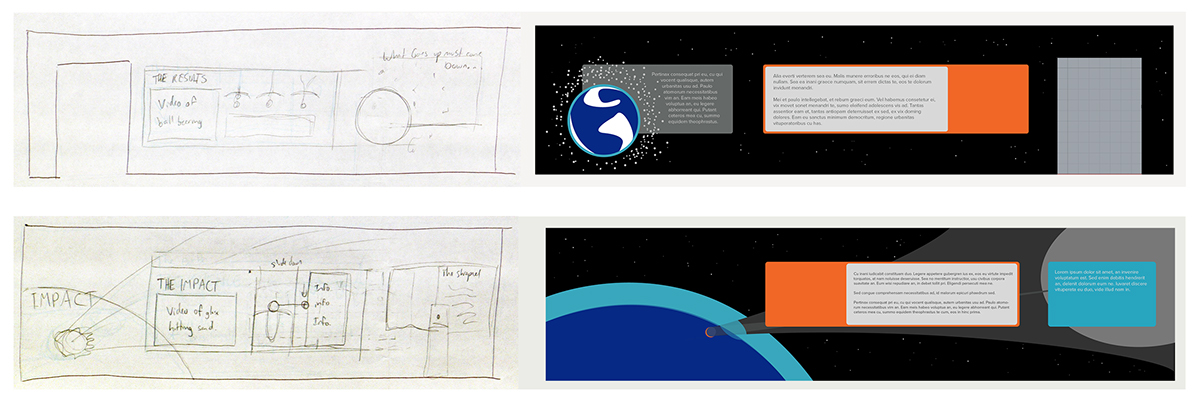
For comparison: two initial sketches and the final texture that was applied to the model.

